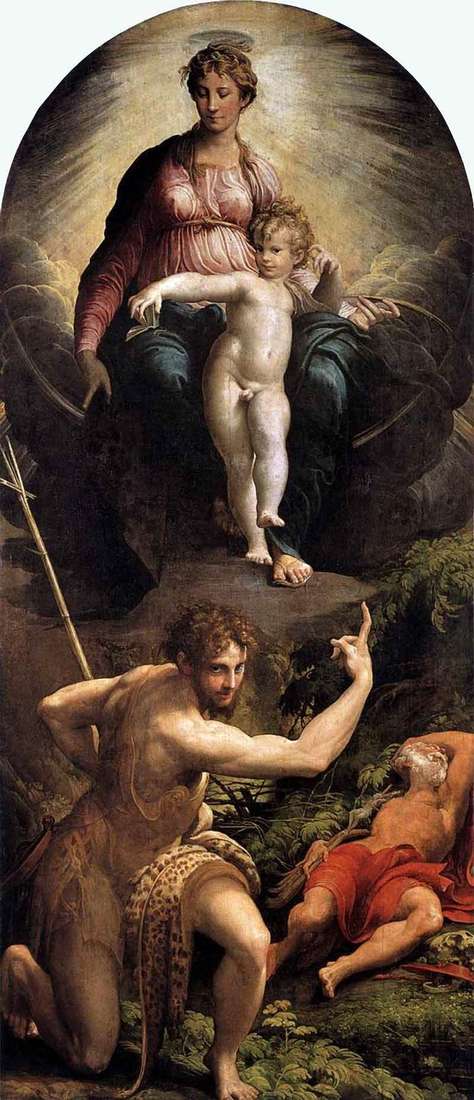
Parmigianino’s painting “The Vision of St. Jerome”. Painting size 343 x 149 cm, wood, oil. “The Vision of St. Jerome” is the most significant work of the Roman period of Parmigianino.
In contrast to Pontormo and Rosso, the anti-Renaissance nature of whose creativity was expressed by the pessimistic breakdown of the worldview of a whole generation who felt the hopelessness of the tragic contradictions of Italian reality, the aesthetic program of Parmigianino is closely connected with the aspirations of the emerging court culture. It reflects the mindset of that part of Italian society, which is trying to get away from the tragic contradictions of reality in a narrow world of subjective, refined ideals that are divorced from life.
It is not by chance that it was Parmigianino, not the Florentine mannerists, who developed the aesthetic ideal of mannerism and had a tremendous impact on the subsequent development of the mannerist art. The aesthetic ideal of the artist, the formation of which can be traced in a number of his works of the 1520s, is subordinated to the desire to counter reality with the world of refined-aristocratic, incorporeal beauty. He is abstract in nature and very soon finds a non-standard ideological position of the master, testifies to the emotional intensity of the search, the approval of his own artistic worldview.
The artistic norms formed under the influence of Michelangelo and Raphael undergo transformations, their proportions lengthen, taking a stylized, grotesque appearance, moving away from reality to idealization to the detriment of artistic design. In his main religious image of that period, “The Vision of St. Jerome” entrenched Parmigianino’s attraction to the ideal of mysterious beauty, detached from the world of beauty.
 Vision de Saint-Jérôme – Francesco Parmigianino
Vision de Saint-Jérôme – Francesco Parmigianino Visión de San Jerónimo – Francesco Parmigianino
Visión de San Jerónimo – Francesco Parmigianino Galeazzo Sanvital, Prince Fontanelato by Francesco Parmigianino
Galeazzo Sanvital, Prince Fontanelato by Francesco Parmigianino Conversion of St. Paul by Francesco Parmigianino
Conversion of St. Paul by Francesco Parmigianino Madonna with a rose by Francesco Parmigianino
Madonna with a rose by Francesco Parmigianino Madonna with St. Margaret and other saints by Francesco Parmigianino
Madonna with St. Margaret and other saints by Francesco Parmigianino Portrait of a man by Francesco Parmigianino
Portrait of a man by Francesco Parmigianino Anthea by Francesco Parmigianino
Anthea by Francesco Parmigianino